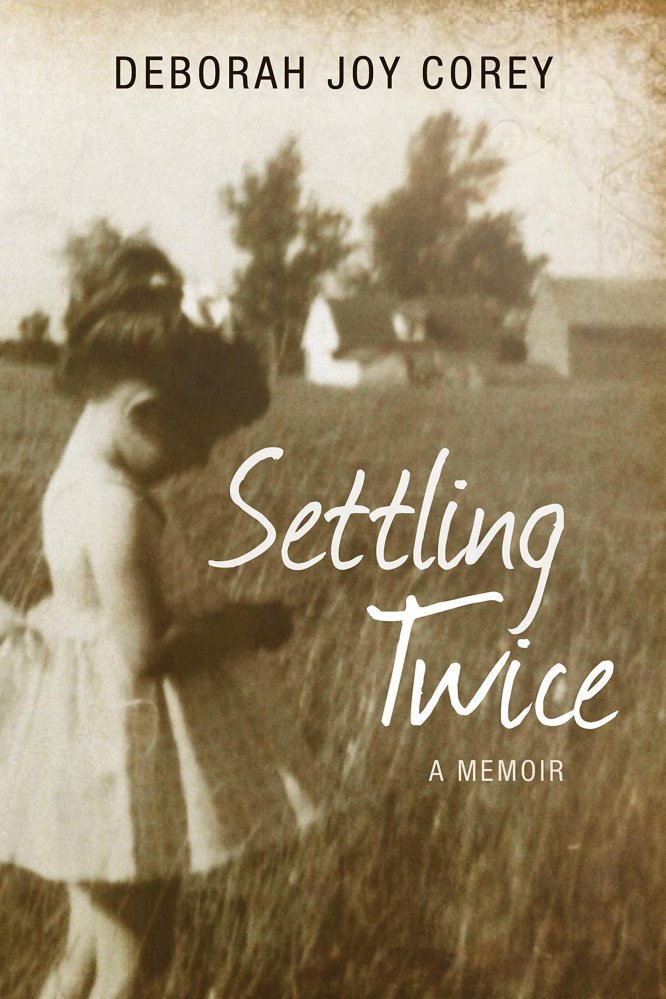How best to structure a memoir? Tradition dictates a linear approach: Begin with the earliest event, end with the latest, and there you go. But sometimes linearity doesn’t entirely match up with lived experiences: The past is always with us, brushing up against the present and anticipating the future. Sometimes events from distinct moments in time, separated by decades, will resonate with one another much more strongly than anything that occurred closer together. In other words, sometimes a more abstract structure better conveys the experience of living.
That’s been the case for a number of recent acclaimed works of nonfiction that push at the boundaries of existing forms: Melissa Febos’ “Abandon Me” and Eileen Myles’ “Afterglow (a dog memoir)” are two recent examples. Deborah Joy Corey’s elegiac, meditative “Settling Twice: Lessons From Then and Now” moves forward and backward in time, circling key moments in the author’s life, but the end result is a satisfying map of the author’s familial history, a work that at times feels like walking through a cloud of memories, yet which possesses enough of a subtle structure that it also reaches a satisfying conclusion.
In the memoir’s preface, Corey explains that this book was inspired by the deaths of her parents, and her attempts to reckon with the sense of grief and depression that accompanied those events. Here, too, she makes a reference to “collaging” assorted elements of her life – a kind of introduction to the structure of the work that follows.
It’s an almost spatial approach to writing, and it works neatly with the way that Corey’s experiences encompass the experience of a number of places. Early in the book, she muses on the nature of peninsulas: specifically, the peninsula on which the town of Castine is located. Corey grew up in Canada, but now calls Maine home, and the relationship and border between Maine and New Brunswick is also explored here, with an almost metaphysical component. Her story of settling in Maine, within a community that initially didn’t expect her to remain for long, addresses larger questions of belonging, of what it means to call a place home.
Over the course of “Settling Twice,” Corey often explores matters related to faith and spirituality. This takes a number of forms: She regularly considers the evolution of her own beliefs and how they compare to the faith of her parents. But the language of religion is also woven into her prose: In the book’s preface, she refers to “a world that has thrown Jesus out with the baptismal water.” At times, her musings on theological matters is deeply serious; at others, as in a section that begins with an anecdote about her “first spiritual conversion” at the age of 5, she explores the intersection of human foibles with systems of belief.
But at its core, this is a memoir that explores questions of family, and the unanswered questions and unexpected secrets that can emerge over a long life. Questions of her family’s origins recur throughout the book, posed by various family members but never fully answered. Corey writes movingly of her mother reconnecting with an old flame, and the sense of paths not taken that permeated her life. All of these harmonize neatly with the sense of mortality that runs through these pages. In some of the most heart-wrenching passages, Corey writes about the speed and unexpectedness by which the people we love can be taken from us.
Corey’s circuitous path through memories returns to certain images, such as boats in water and bodies in solitude. It can take a little while for the rhythms of “Settling Twice” to establish themselves, but when they do, Corey deftly explores the familial and emotional terrain that has so haunted her. The book takes a number of risks as it reaches its destination, but ultimately, it gives a comprehensive sense of both its author’s life and of the lives that have shaped it.
New York City resident Tobias Carroll is the author of the novel “Reel” and the short story collection “Transitory” and has reviewed books for Bookforum, the Star Tribune and elsewhere.
Send questions/comments to the editors.



Success. Please wait for the page to reload. If the page does not reload within 5 seconds, please refresh the page.
Enter your email and password to access comments.
Hi, to comment on stories you must . This profile is in addition to your subscription and website login.
Already have a commenting profile? .
Invalid username/password.
Please check your email to confirm and complete your registration.
Only subscribers are eligible to post comments. Please subscribe or login first for digital access. Here’s why.
Use the form below to reset your password. When you've submitted your account email, we will send an email with a reset code.